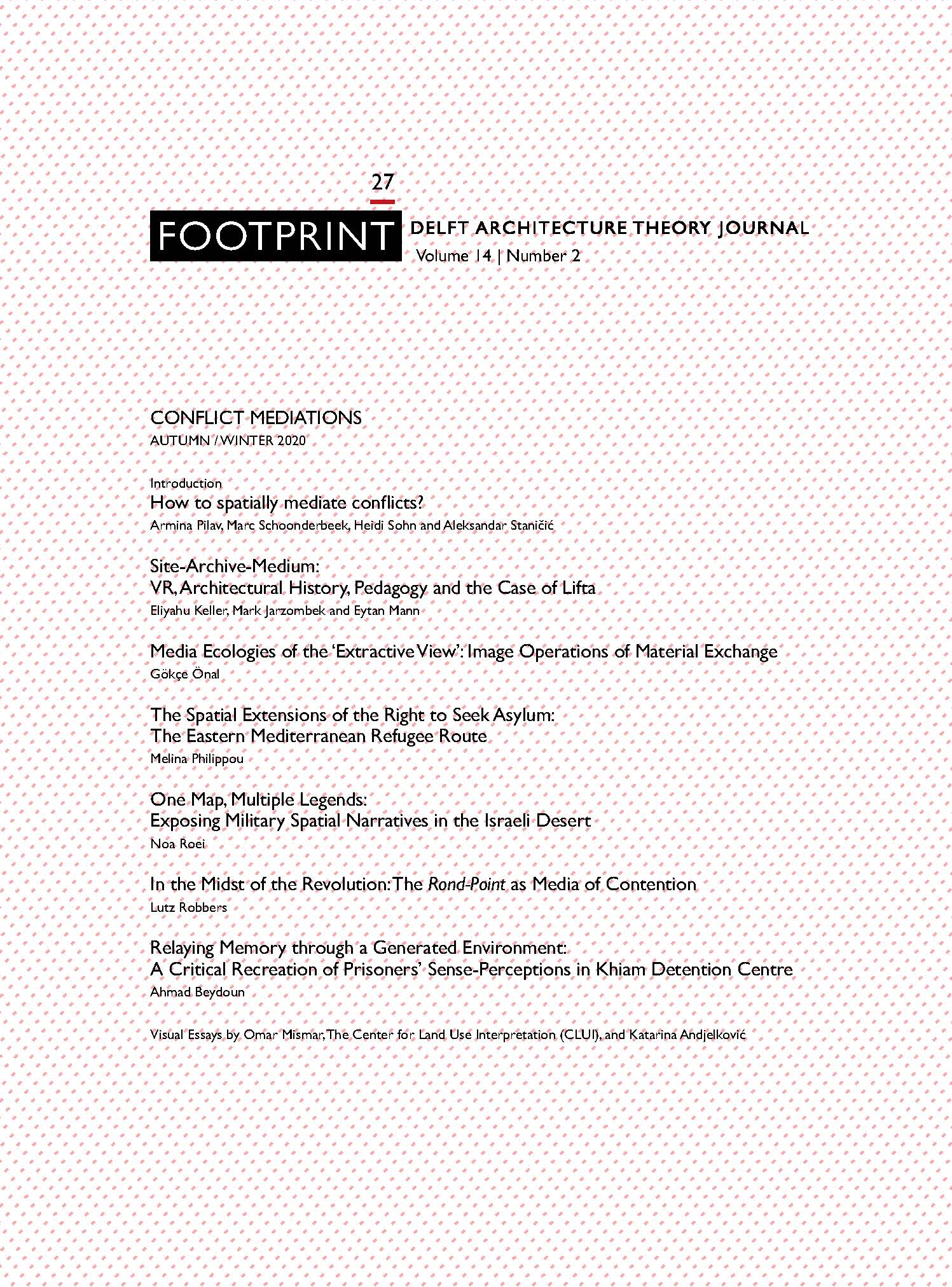On Targets
Dropping in on American Bombing Ranges
DOI:
https://doi.org/10.7480/footprint.14.2.5213Abstract
Impact range targets in military training areas can be square, triangular, rectangular, circular, and linear. Some are designed to look like other things, like airbases, villages, convoys, industrial areas, surface-to-air missile sites, and are built out of old airoplanes, trucks, tanks, cars, buses, boats, tires, mounds of earth, and empty shipping containers. Some are meant to be bombed or strafed physically, others electronically.
The most focused type of target at these ranges, the classic target you might say, is circular, like a bullseye. Its simple geometric embrace of space defines a periphery, and centre. Though largely two-dimensional when seen from above, shown as a gallery they have a cosmological air, whether a planetary hard mass pulled in by gravity, or a solar gas in a sustained continuous explosion. The tension between being drawn inwards, toward the ground, and exploding outwards, is in equilibrium.
Some people say that these days everything is a target. These, however, undoubtedly are, and they are out there for the world to see, through internet-based satellite imagery providers like Google Earth. Like framed photographs on the wall, they narrow our attention, and ask us to overlook everything else.
Downloads
Published
Versions
- 2021-04-12 (2)
- 2021-02-23 (1)
Issue
Section
License
Copyright (c) 2021 The Center for Land Use Interpretation CLUI

This work is licensed under a Creative Commons Attribution 4.0 International License.
- Authors retain copyright and grant the journal right of first publication with the work simultaneously licensed under a Creative Commons Attribution License that allows others to share the work with an acknowledgement of the work's authorship and initial publication in this journal.
- Authors are able to enter into separate, additional contractual arrangements for the non-exclusive distribution of the journal's published version of the work (e.g., post it to an institutional repository or publish it in a book), with an acknowledgement of its initial publication in this journal.





